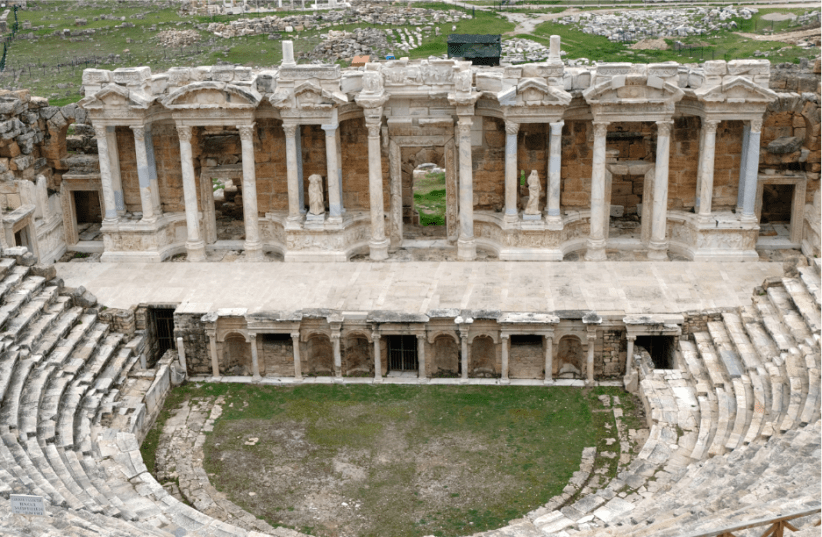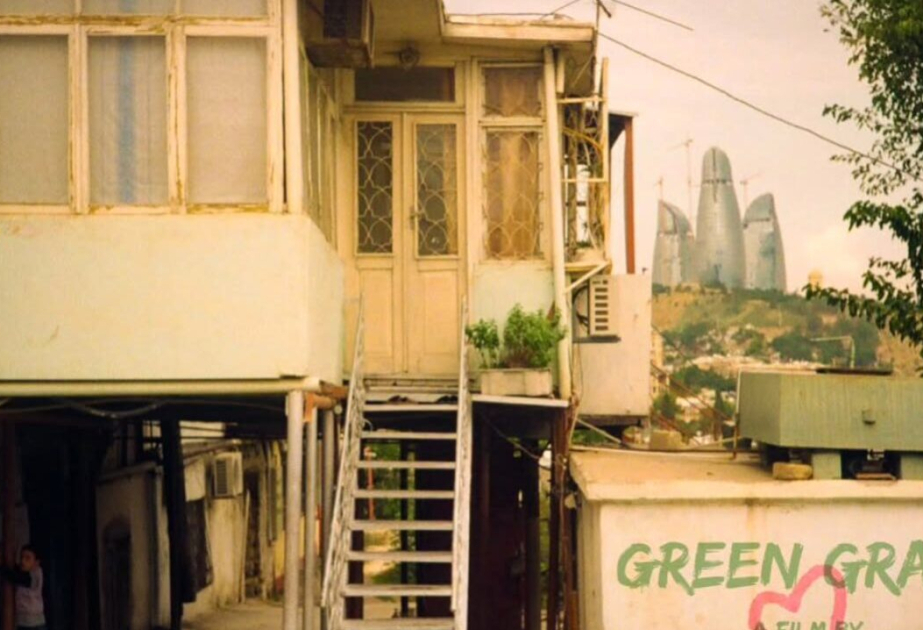By JERUSALEM POST STAFF
During their excavation of the site in 2013, archaeologists reported witnessing several birds dropping dead after flying too close to the mouth of the passage.
In the modern town of Pamukkale, known for its hot springs in southwestern Turkey, archaeologists discovered in 2013 the stone archway known as Pluto's Gate, believed to be the oldest Gate to Hell on Earth. Excavated from amid the ruins of the ancient Hellenistic city of Hierapolis, the site offers a glimpse into ancient rituals and geological phenomena.
Pluto's Gate, or Ploutonion in Greek, is built into one wall of a rectangular, open-air arena with raised stone seating and a temple atop. The structure was a sacred site dedicated to Pluto, the Greek god of the underworld, also known as Hades. The shrine was considered a portal from which flowed the toxic breath of Cerberus, the mythical three-headed dog said to guard the underworld.
During the excavation, archaeologists witnessed several birds dropping dead after flying too close to the mouth of the passage. The observation corresponded with the ancient writings of the Greek geographer Strabo, who lived between approximately 63 BCE and 24 CE. Strabo described the site, saying, "This space is full of a vapor so misty and dense that one can scarcely see the ground. Any animal that passes inside meets instant death," according to Express.co.uk.
Strabo's accounts also included personal experiences with the lethal vapors. He wrote, "I threw in sparrows, and they immediately breathed their last and fell." The historical accounts suggest that the site has been emitting deadly gases for over two millennia.
Modern science provided explanations for the ancient observations. Hardy Pfanz, a volcano biologist, tested the air around the vent and discovered that the concentration of carbon dioxide (CO₂) could be as high as 80%. "Just a few minutes' exposure to 10% carbon dioxide can kill you, so the levels here are really deadly," Pfanz explained, according to The Sun. Researchers found that Pluto's Gate was filled with volcanic CO₂, with concentrations around the shrine reaching as high as 80%, as noted by The Sun.
The lethal gas forms a dense layer that coats the bottom of the cave, creating a deadly trap for animals. Bulls, sheep, and other sacrificial animals would succumb quickly, as they breathed with their noses closer to the ground. Gas coated the bottom of the cave at Pluto's Gate, forming a lethal lake particularly deadly to such animals.
Strabo also noted that the priests who conducted rituals at the site seemed immune to the deadly effects. "Strabo noted that the priests who entered with their offerings would 'hold their breath as much as they [could],' which may explain their survival in such a toxic environment," reported The Sun. The ability of the priests to withstand the fumes added to the aura of the site and reinforced their perceived connection to the divine.
"Only the priests could stand in front of the portal," stated Francesco D'Andria, the archaeologist who led the excavation, according to The Sun. Small birds were given to pilgrims to test the deadly effects of the cave, a practice that demonstrated the power of the gods and the nature of the underworld's entrance, as reported by The Sun.
Spectators could observe the sacred rites from the safety of the temple but were forbidden from entering the gate's entrance. People believed those who inhaled the toxic breath would be felled on behalf of Cerberus's master, Pluto, the ruler of the Greek underworld. The combination of geological phenomena and religious rituals made Pluto's Gate a focal point of ancient spirituality and fear.
Two thousand years later, the Gate to Hell lies in ruins, believed to have been torn apart during the 6th century CE by Christians and later damaged by earthquakes. The site remains hazardous; parts of the cave reach levels of 4% to 53% volcanic carbon dioxide, depending on one's location inside the cave. The lower one is to the cave floor, the higher the concentration of suffocating gas, which is why animals were more likely to succumb than humans.
UNESCO designated the ruins of Hierapolis, including Pluto's Gate, as a World Heritage Site. Visitors are cautioned to be wary due to the site's toxicity and its status as an important archaeological location. "There are few pictures inside the grotto, due both to its toxicity and its nature as an archaeological site," reported The Sun.
The article was written with the assistance of a news analysis system.

















.png)



